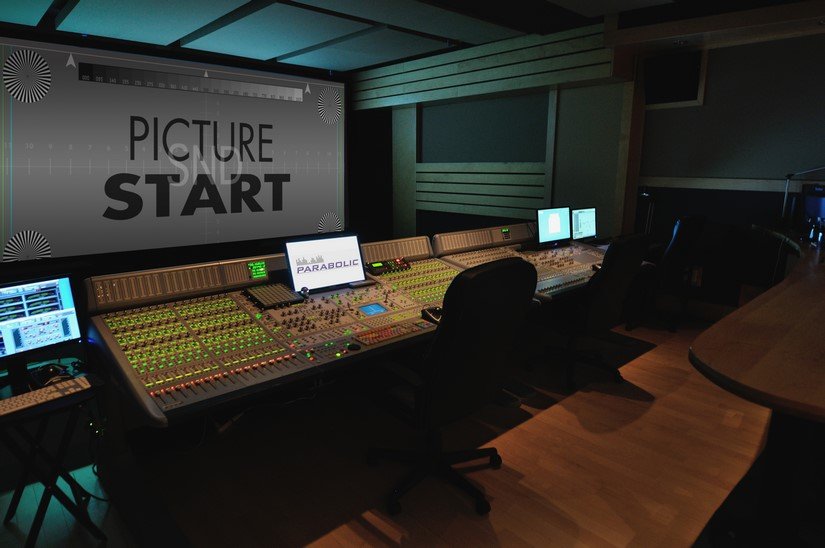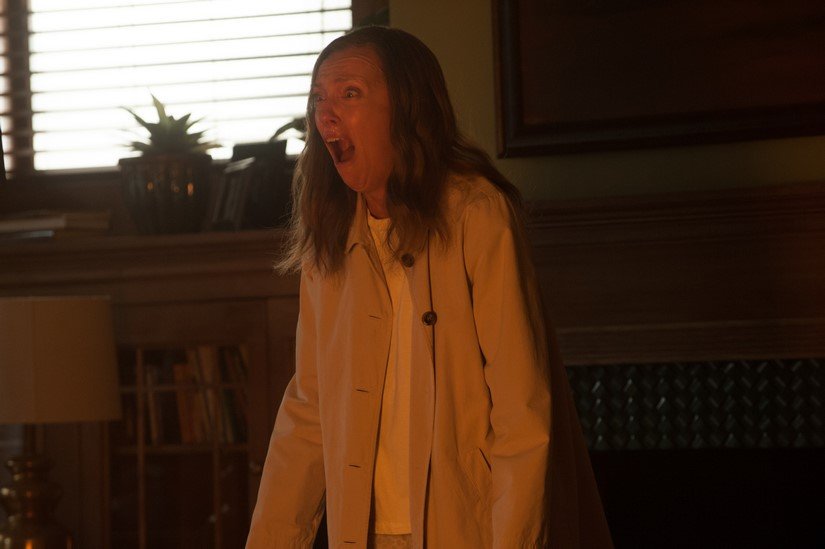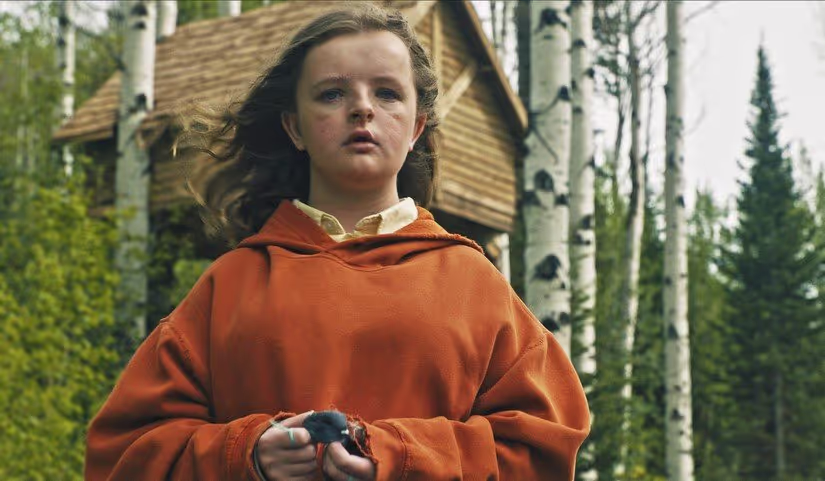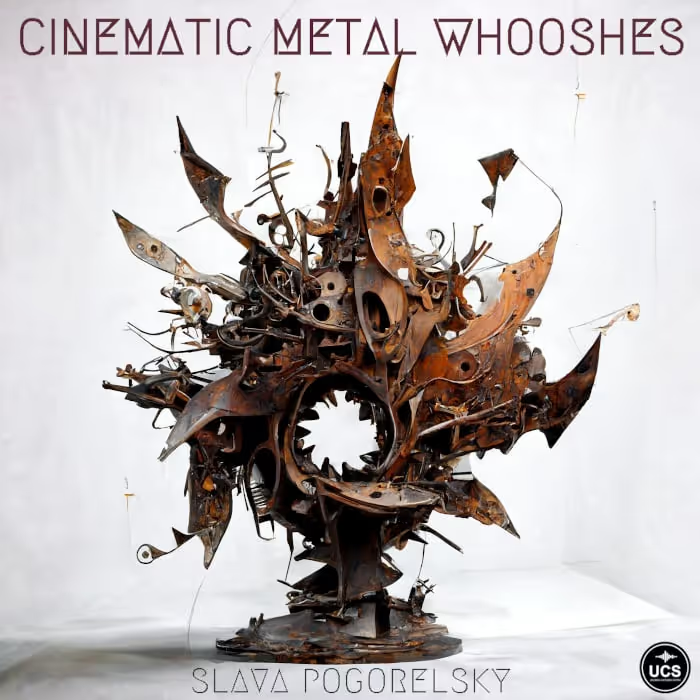I'm very happy to be able to present the the in-depth story on how the sound team at Parabolic NY carefully controlled the tension in Hereditary with sound.
They also discuss the finer points of the sounds of gore, how you make a room tone sound evil - and a sinister sonic element heard throughout the film that you probably haven't noticed. Note: contains spoilers
They say it’s the quiet ones that you have to look out for and I feel that philosophy holds true for films too. Director Ari Aster’s film Hereditary — in theaters now, starts out quiet and creepy, and then before you know it the story takes a disturbing turn into darker territory. Decapitation plus disinterment plus demonic possession equals disturbing.
It begins as an uneasy experience of a family attending a grandmother’s funeral. The daughter gives a strange eulogy while the granddaughter draws an odd picture. The whole situation feels askew and things become steadily creepier. The long pauses between lines of dialogue are colored in using uncomfortable atmospheres. The music is low and brooding, with sustained chords that rise and then die in a swarm of chittery digital interference sounds or repeating musical motifs. The sound starts as dark and off-putting, subtle and unnerving, and as the events of the story become more twisted and gruesome and horrifying, the sound follows suit.
The masterminds behind the sound design and mix are MPSE award-winning supervising sound editor/re-recording mixer Lewis Goldstein, re-recording mixer Tom Ryan, and their team at Parabolic NY. Here, Goldstein and Ryan talk about their collaboration with director Aster. They discuss how they used subtle sounds and manipulated the mix to control the tension, and share details on how they designed the gore, insects, and more!

What was your collaboration with director Ari Aster like? What were his goals for sound on Hereditary?
Lewis Goldstein (LG): When we first spoke about the film, Ari’s whole premise was that he wanted to make it a horror film without it sounding like a typical horror film. There are a few whiz-bang scare moments, but that wasn’t really what this film was going to be. This was meant to be a much more subjective and mind altering soundscape.
We would constantly play through the mix and nudge and tweak and pan. We did a lot of really interesting movement with the sound, even with music. Composer Colin Stetson had some amazing elements in the score that really lent themselves to movement. We’d take these sounds and float them around the environment as scenes were going on — sometimes quickly, sometimes slowly. We are in some of these environments and scenes for a long pause, so we used the three-dimensional aspect of the speakers that we were working with to give the track a little bit of motion in a subtle manner.
This was our first time working with Ari, and it was a wonderful experience. He’s a great guy and he made a fantastic film. He gave us the latitude to do what we thought we should do and then we all collaborated to make it exactly what he wanted. It worked out very well, and we had great fun doing it.
You’ve done a wonderful job of using sound to help control the tension in Hereditary. The best example is the scenes surrounding Charlie’s death. In the car, the sound grows in intensity and volume as her situation becomes more dire. Then, after the impact, it’s super quiet again and stays that way until Annie discovers the car outside. You just wait for her scream and when it finally comes it’s gut-wrenching. Can you talk about your approach to that sequence?
LG: The picture editing in that sequence gave us the ability to create great perspectives. First, we’re inside the car with Charlie (Milly Shapiro) as she’s gasping and wheezing. We kept building up the music tension, the car engine level, and Charlie’s gasping and wheezing to get as loud as it does before the impact. Then, it cuts to the shot of Peter (Alex Wolff) in the car and you hear the suspension lift up as it comes to a stop. There’s this whole transition of the car settling into the grit on the road and that cuts to a long-shot and we just have these distant wind sounds. It’s a very dynamic scene visually and sound-wise.
The length of time that they chose to stay on that long-shot before we cut to Peter’s face was perfect. It’s just the right amount of time to absorb the gravity of what just transpired. We’re sitting on those distant winds and I think there’s a slight ticking of the engine cooling down in the distance. Again, we were adding a lot to the surrounds for that wide shot.
It’s a pretty terrifying moment and the shot stays on Peter’s face as he’s gasping and wheezing and he can’t bring himself to turn around. It’s just so quiet. I think there is one simple cricket sound happening. By this time, you’re just so devastated at the silence.
Peter’s breathing was all production. And Annie’s (Toni Collette) scream was her on-set performance. Most of her lines and the other lines in the film are production. There was some ADR but not much.
Tom Ryan (TR): We played with the perspective of Annie’s scream a lot, making it start outside the house and then it turns into being inside the house.
LG: The reverb starts to increase so it goes from being an exterior scream to being an interior scream. We do it very subtly so that transition from her finding Charlie’s body in the car in the driveway to her wailing in the bedroom to her crying at the cemetery sounds seamless. But, it still has a movement to it and it’s not just the dialogue doing its thing.
The dialogue is so quiet and clear, and that made the quiet moments that much more intense. There was no extraneous sound. It all seemed purposefully intended to be there…
LG: The production sound on this film was incredibly well recorded. We had a lot of latitude to use it as clean as we wanted. There were definitely scenes where we pushed the dialogue to try to give it a little bit of raunch. We’d EQ it a bit to make it more brittle sounding.
Tension at the dinner table
Talking about the background sounds, there are lovely floor creaks and door rattles in the house. Where did those sounds come from?
TR: Some of the sounds we recorded in our own houses. Both Lew and I have older houses and we were able to capture recordings that fit this house. We also used effects libraries as well as Foley recorded by Parabolic’s in-house Foley team of Foley artist Shaun Brennan and Foley mixer Wen Tseng.
We used that combination of sounds and placed them very specifically in the track. For example, there’s a great moment near the beginning of the film when they come home after the grandmother’s funeral. You hear movement upstairs and most people probably don’t even catch that. There are a lot of these little things that are happening very purposefully, like creaks and doors.
LG: Ari was very into having these clues throughout the film, things that are going on in the back story. Like in the house, you hear a little scurrying of a person upstairs that is just barely there, but in the right environment you perceive it. This starts to set up the idea that there’s something going on outside of this family’s knowledge. And it has been going on for quite awhile really.
Were there any other sounds that you recorded specifically for the film?
LG: The scene in which Annie cuts her head off with a piano wire comes to mind. In the past, I’ve done plumbing work on my house. I remember that when you cut PVC pipe you use this thing called a wire saw, which is basically a serrated wire with a handle on each end. So, we started cutting things up with that. Shaun [Brennan] took this wire and proceeded to cut through lots of hams and frozen chickens. One person held the chicken securely while the other hacked away beneath its wings and breast. Then, it was a matter of layering and editing because we’re getting into the supernatural so the speed at which it goes really starts to become unworldly.
We played with that ‘head cutting off’ sound quite a bit. We’d finish that scene and come back to it days later and try speeding it up a bit more, or slowing it down a bit more. We talked about where the sound should start and where we should start breaking through the flesh and getting into bone. Ari was really on top of that. He had an idea of when we should hit bone and when the sound should get grittier and more saw like. Then, we started layering in the sound of saws cutting wood.
That scene only lasts twenty or thirty seconds, but the challenge was to build that transition the way that Ari wanted — from flesh to bone to where it finally cuts through and snaps off. All of that is off-camera at that point. And then there’s the head bounce. Again, that was something that got a lot of attention. How long does it take from the time the head snaps off until it hits the floor? And, how many times does it bounce? Is the first bounce squishier than the next two bounces?
That was something that Tom started with months and months ago. The sound of that was mulled over for the duration of our post sound schedule. And it changed quite a bit. We’d sit back and watch it and say things like, “You know, the second bounce is just a little too close to the first bounce.” It’s a sick job, but somebody’s got to do it.
And what about Charlie’s head impact? That’s another scene where you have some fun with head sounds…
LG: The funny thing about that head impact is that we had built it way more gruesome at one point but Ari didn’t want it to sound like the head got squashed because when you see it later on the head is completely intact. So it was really this fine line between us knocking her head off but not smashing it. We actually went around that for a long time, trying to keep it gruesome but not going overboard. So these were some pretty gory discussions.
TR: Less squishing and more tearing was the direction.
LG: Exactly. Ari wanted more tearing and impact, with some bone but not as much squish.
What were the sounds that you ended up using for Charlie’s head impact?
TR: It was a combination of a lot of sounds. There are Foley elements in there and sound effects.
LG: We have a lot of meat hits, and sounds that we would use for punches. There’s also an interesting element in there that you normally wouldn’t think of for something like that — there was a tremendous amount of low-end on that impact.
Since the music does fill up a lot of the low-end spectrum, was it a challenge to weave that in with the effects? When creating the effects, did you know the score would be so low-end heavy?
LG: I wouldn’t say it was difficult to mix. In fact, we enhanced a lot of that low-end by putting it through subharmonic synthesizers and putting that into the subwoofer and the mains. In particular, there was the sound of a contrabass that Colin used, which was this really low-end, pulsing sound that goes through full scenes. It just goes on for minutes and minutes. From a mix point of view, we would often play it as originally recorded and then slowly start to add in some subharmonic low-end so that it evolved and grew through the scene. That was the one thing about the film in general; there were a bunch of elements that are constant motifs.
From a sound effects point of view, most of what we added wasn’t too low-endy because there was so much presented in the music so we went in another direction for our detailed sonic elements. We created these very specific, somewhat-evil room tones for each room in the house. Peter’s room had a very specific sound, and the living room had a very specific tone. Charlie’s room was probably the most defined as this bizarre, very subtle background.
Another element (and most people won’t notice this) was a grandfather clock ticking through every room. It changes perspectives very subtly. Sometimes it’s very close to being imperceptible and at other times the sound is very obvious. We changed its character with reverb, tone, and EQ to always keep its position in the house constant. For example, when you’re upstairs, the clock has a lot more reverb on it and it’s placed in the surrounds. A lot of the work we did had these very detailed subtleties to it while still trying to keep the tension as we move around.

How do you make a room tone sound evil? What characteristics should the sound have in order to give off an evil feeling?
TR: Charlie’s room has a low-mid range whistle to it, and it just makes you uncomfortable. It’s very subtle like Lew said.
LG: It almost has this tinnitus quality to it.
TR: Yeah, and it’s whistling through the room. You’re not really aware of what’s causing the unease.
LG: We used different combinations of winds that we pitched, and hollow tones and basement tones. A lot of it comes from layering different sounds and playing with them from a level point of view until you get something that feels off, and you feel like, yeah, this is Charlie’s room.
Bonus: Explore the Ultimate Horror Sound Guide:

Let’s talk about the creepy insect sounds. The flies felt like they were in the theater at times. Can you talk about your work on those?
LG: Again, that took a lot of time and layering of elements. It really evolved. The great thing about how the three of us worked is we spent a significant amount of time watching the movie, and re-watching scenes. We’d go back and discuss the amount of flies in the room and then the VFX team would add in a big, specific fly here and there. And we’d layer sounds of fly swarms in with single fly sounds. That evolved over several viewings of the film. We paid attention to how they moved, and when there should be more in the surrounds. When you’re upstairs in the attic, all the flies are around the body, and then downstairs there’d be just a few flies still darting around after they pull down the attic staircase. It was a matter of manipulating and listening over and over again until we’re all in the room agreeing that it sounded right.
There were also nice, creepy ant sounds. For example, there’s the scene when Annie wakes to find her blanket is crawling with ants and there’s a trail of them leading into Peter’s room. How did you come up with those?
TR: That was Foley. Shaun and Wen [Tseng] used a fork digging into a head of garlic cloves, paper clips scratching on concrete as well as rustling celophane.
Shaun is really quite fantastic at coming up with little, detailed sounds like that. There are a lot of moments in this film that just really creep you out.
Did you have a favorite scene for sound?
LG: The car sequence where Charlie’s head gets knocked off is pretty up there. The dream sequence between Peter and his mom was fun to mix.
When the film started to get supernatural, I enjoyed that too. The whole section of where Annie is on the ceiling, that’s one of the bigger scares in the movie. She jumps down and starts chasing Peter who flees to the attic. Annie is on the other side of the hatch for the attic stairs, and she’s beating her head on the ceiling. That whole build is fun.
I also enjoyed the subtle details and dynamics of this movie. I’ve always found it very challenging to do movies with this kind of subtlety. It takes time and effort to really make it work.
As we were working on scenes, it was really amazing just how minutely we would change the level or position of a sound and the impact that would have. A single dB made such a difference in the way a sound would sit and the impression that it gave in the quiet scenes.
TR: Like Charlie’s clicks.
LG: We focused a lot of attention on how loud Charlie’s clicks were and where they were coming from. We’d set those levels and then days later we’d make it a bit louder and then come back and make it a bit lower. We went back and forth on those quite a bit.
What are you most proud of in terms of sound on Hereditary?
LG: The level of which people are appreciating the sound in this movie. We are getting so many comments of how the sounds really enhanced the experience for people.
Mixing the film was just a wonderful experience. We had so many opportunities to play with sound.
From our very first conversation, Ari had a clear-cut vision about what he wanted. When we finished, we all felt this was the way it should sound. I feel confident that we met his expectations, and that was really important to us.








